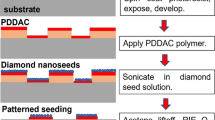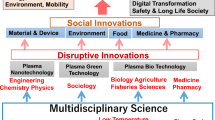Abstract
We present a low temperature plasma assisted bonding process that enables the bonding of silicon, silicon oxide and silicon nitride wafers among each other at annealing temperatures as low as room temperature. The process can be applied using standard clean room equipment. Surface energies of differently treated bonded samples are determined by a blister test method for square shaped cavities. For this reason, we extend the well-known blister test method for round shaped cavities to the square shaped case by a combined analytical and numerical approach. Accordingly, the energetic favored crack front propagation in the bond interface is determined by numerical simulations. The surface energies of the tested samples are calculated and compared to anodic silicon-to-Pyrex® bonds. Surface energies of up to 2.6 J/m2 can be achieved between silicon and silicon oxide wafer pairs at low annealing temperatures. Room temperature bonded samples show a surface energy of 1.9 J/m2. The surface energy of silicon-to-Pyrex glass bonds yields 1.3 J/m2. Small structures, e.g., bridges down to 5 μm can be bonded using the discussed bonding process. Selective bonding of silicon-to-silicon oxide wafer pairs is performed by structuring the oxide layer. The successful integration of the bonding process into the fabrication of micropumps is highlighted.


















Similar content being viewed by others
References
Bower RW, Ismail M, Roberds BE (1993) Low temperature Si3N4 direct bonding. Appl Phys Lett 62:3485
Doll A, Goldschmidtboeing F, Heinrichs M, Woias P, Schrag HJ, Hopt UT (2004) A bidirectional piezoelectric micropump for a medical application. ASME Conference, Proceedings of IMECE04, Anaheim, USA, 61083
Mack S, Baumann H, Gösele U, Werner H, Schlögl R (1997) Analysis of the bonding related gas enclosure in micromachined cavities. J Electrochem Soc 144:1106
Maszara WP, Goetz G, Caviglia A, McKitterick J (1988) Bonding of silicon wafers for silicon on insulator. J Appl Phys 64
Sanchez S, Gui C, Elwenspoek M (1997) Spontaneous direct bonding of thick silicon nitride. J Microeng 7:111–113
Timoshenko S (1961) Theory of elastic stability. McGraw-Hill Classical Textbook
Tong Q-Y, Gösele U (1999) Semiconductor wafer bonding, science and technology. Electrochem Soc Ser
Williams ML (1969) The continuum interpretation for fracture and adhesion. J Appl Polym Sci 13:29–40
Acknowledgments
We gratefully acknowledge the Deutsche Forschungsgesellschaft (DFG), SP 1159 for financial support. The silicon chips were fabricated in the clean room service center (RSC) of the IMTEK Freiburg.
Author information
Authors and Affiliations
Corresponding author
Rights and permissions
About this article
Cite this article
Doll, A., Rabold, M., Goldschmidtböing, F. et al. Versatile low temperature wafer bonding and bond strength measurement by a blister test method. Microsyst Technol 12, 418–429 (2006). https://doi.org/10.1007/s00542-005-0030-x
Received:
Accepted:
Published:
Issue Date:
DOI: https://doi.org/10.1007/s00542-005-0030-x




